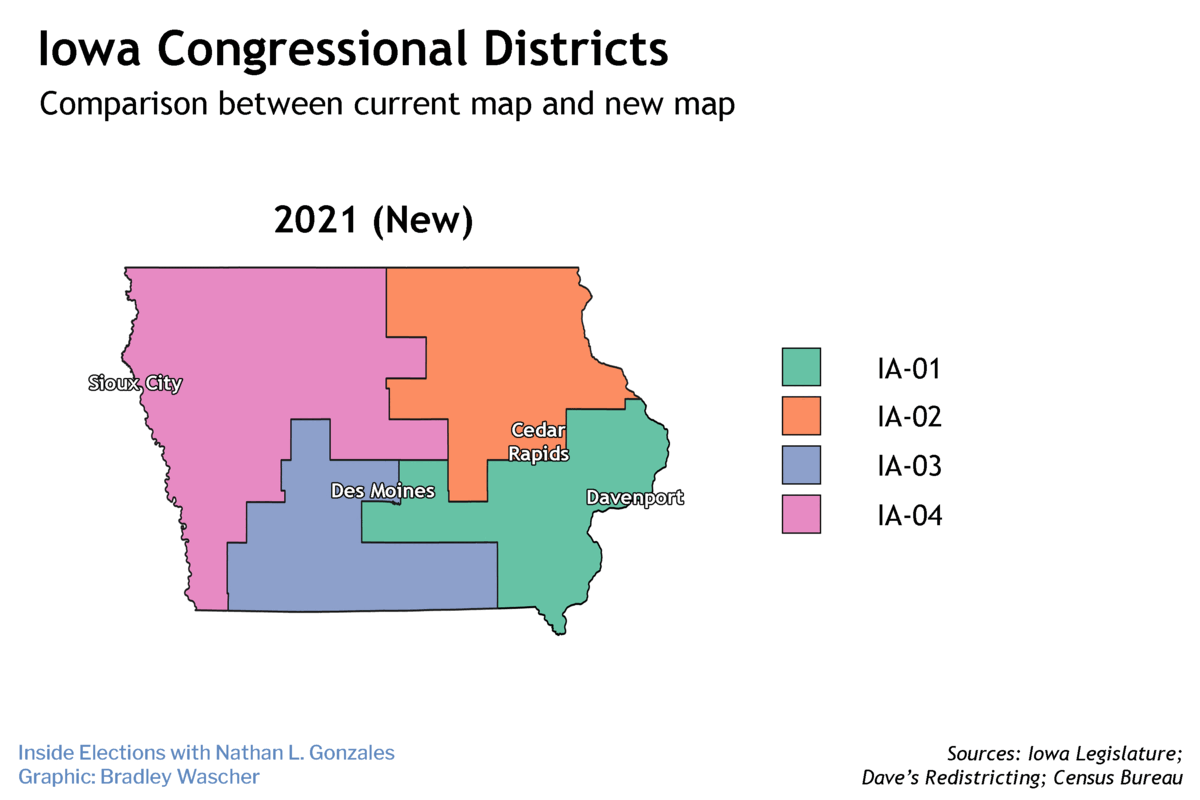Republicans defeated two of the three Democratic members in Iowa in 2020 and are hoping to finish the job next year. Beating Democratic Rep. Cindy Axne would give the GOP full control of the four-member delegation and a net gain of one seat on their march to the majority.
After rejecting the first map drawn by the nonpartisan Legislative Services Agency, the Iowa state legislature approved a second LSA-drawn map on Oct. 28 and Gov. Kim Reynolds, a Republican, signed it into law on Nov. 4. The vote was bipartisan and nearly unanimous, a contrast with the first map, which Republicans rejected in the state Senate by a party line vote.
Iowa’s redistricting process is unique in that it is primarily handled by the LSA, a nonpartisan research and analysis agency, and not politicians or a bipartisan commission. The LSA is not permitted to consider incumbent residences or political data, and must try to keep each of Iowa’s 99 counties whole. The scheme results in more consistently competitive congressional elections, and that trend looks to continue into the next decade.
Like the old map, the new map features three Republican-tinted but competitive districts, and one solidly Republican district in the state’s northwest corner. And similar to the old lines, all four new districts would have been carried by President Donald Trump in the 2020 presidential election (when he won the state by 8 points). Though in 2018, Democratic gubernatorial nominee Fred Hubbell would have carried three of four of the new districts despite losing statewide by 3 points.

1st District
The new 1st is the successor district to the old 2nd. It covers the southeast corner of the state, and contains Iowa City and Davenport. The district...

